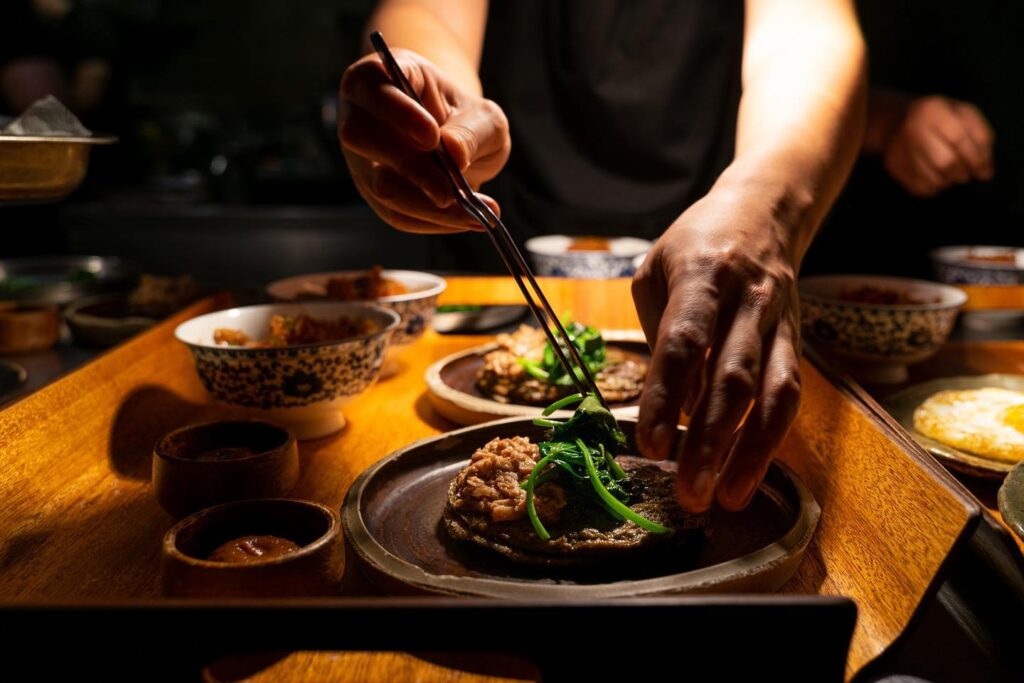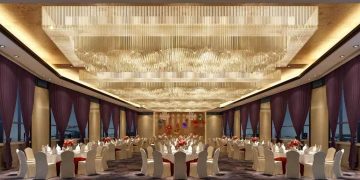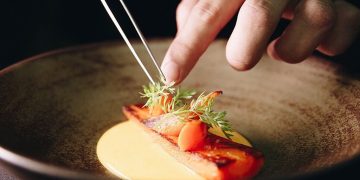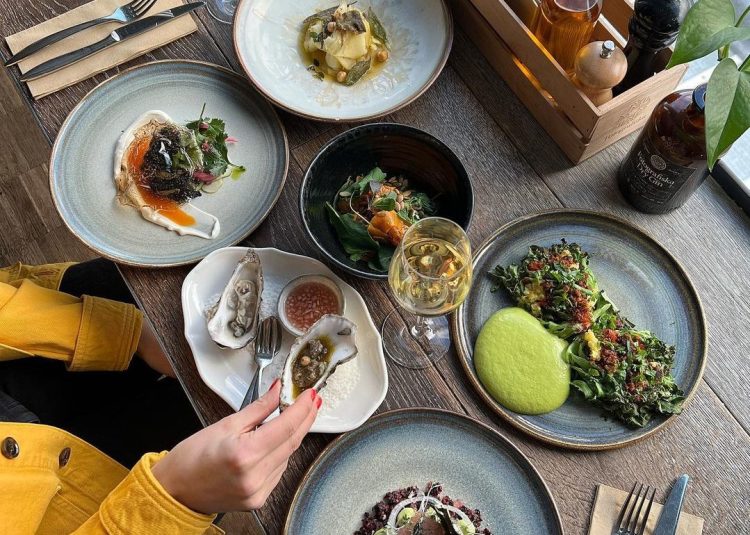In recent years, sustainability has transitioned from a niche movement to a mainstream force in nearly every industry, including the world of luxury dining. As consumers become increasingly conscious of their environmental footprint, top chefs and luxury restaurants have begun to adapt their menus, sourcing methods, and dining experiences to incorporate sustainability without compromising on luxury or flavor.
The trend toward sustainable luxury dining is reshaping how fine dining establishments approach the ingredients, methods, and experiences that define their menus. Leading chefs are not just creating meals—they are carefully curating a culinary journey that balances indulgence with environmental responsibility. In this article, we will explore how top chefs and restaurants are integrating sustainability into the luxury dining experience and how this evolution is influencing high-society gatherings and elite events.
The Shift Towards Sustainability in Fine Dining
Traditionally, the fine dining world was associated with luxurious ingredients, extravagant meals, and a certain level of resource consumption. However, the rise of sustainable luxury dining represents a conscious effort to rethink the way food is produced, sourced, and enjoyed at the highest levels.
1. Sourcing with a Conscience
One of the key components of sustainable luxury dining is a commitment to sourcing ingredients that are ethically and responsibly produced. Leading chefs are now seeking out local, seasonal ingredients that are harvested with minimal environmental impact. In some cases, restaurants are growing their own produce in rooftop gardens or on-site greenhouses, ensuring the ingredients are as fresh and environmentally responsible as possible.
Luxury restaurants that emphasize sustainability are also forging partnerships with small-scale farmers and ethical fisheries to ensure that the ingredients they serve come from sources that prioritize biodiversity, ethical labor practices, and conservation efforts. For instance, sustainable seafood, organic meats, and plant-based options are becoming central to many fine-dining menus. This not only benefits the environment but also elevates the dining experience by offering foods that are fresher, more flavorful, and often healthier.
2. Zero-Waste Cooking: Redefining Efficiency and Luxury
One of the most compelling innovations in sustainable dining is the growing trend of zero-waste cooking. In the past, much of the food at high-end restaurants was discarded—be it scraps, peels, or offcuts. However, top chefs are now embracing creative methods to use every part of an ingredient, turning what was once considered waste into new dishes or byproducts.
From root-to-stem cooking to the fermentation of food scraps for sauces or pickles, sustainable chefs are redefining the concept of luxury by making every bite purposeful. This commitment not only reduces food waste but also challenges chefs to push the boundaries of creativity and innovation, offering diners an experience that goes beyond traditional fine dining.
3. Sustainability on the Plate: Plant-Based Luxury
While the fine-dining world has long been associated with lavish meats like Wagyu beef and truffles, a noticeable shift has occurred towards more plant-based and vegetable-forward menus. Sustainable luxury dining isn’t about eliminating meat; it’s about offering innovative and indulgent alternatives that showcase the beauty and flavor of vegetables, grains, and plant-based proteins.
Chefs such as Daniel Humm at Eleven Madison Park have made headlines for embracing plant-based menus, proving that sustainability doesn’t mean sacrificing flavor or opulence. Luxury dining is no longer defined solely by expensive animal products; rather, it’s about celebrating the full potential of seasonal vegetables, grains, and alternative proteins in a way that feels just as extravagant.

Sustainable Luxury Dining at Iconic Restaurants
Some of the world’s most renowned restaurants have been at the forefront of this movement, using sustainability as a key pillar of their luxury dining philosophy.
1. Noma (Copenhagen, Denmark): A Pioneer in Sustainable Fine Dining
Renowned for its new Nordic cuisine, Noma has long been a trailblazer in the sustainable dining movement. Chef René Redzepi has made it a mission to create a menu that is deeply connected to local ecosystems, using ingredients that are native to Denmark and responsibly foraged or grown. In doing so, Noma showcases how sustainability and luxury can go hand in hand.
The restaurant also emphasizes zero-waste cooking, where the team utilizes every part of an ingredient, and much of the menu focuses on plant-based and locally sourced dishes. Noma’s sustainable practices have set a standard for how high-end dining can integrate environmental responsibility into its ethos while still offering guests a world-class experience.
2. Eleven Madison Park (New York, USA): The Plant-Based Revolution
After shifting to an entirely plant-based menu, Eleven Madison Park has redefined what a sustainable fine dining experience can look like. Under the direction of Chef Daniel Humm, the restaurant now highlights the beauty and creativity of plant-based cuisine while still delivering the luxury, presentation, and sophistication that the restaurant is known for.
The restaurant’s focus on plant-based dining is designed to reduce its carbon footprint, yet each dish is executed with the utmost precision and elegance. From plant-based caviar to mushroom truffle mousse, each dish is designed to be a luxurious experience that challenges the notion that sustainability means sacrificing indulgence.
3. The Ledbury (London, UK): A Perfect Balance of Luxury and Sustainability
The Ledbury is one of London’s most acclaimed restaurants, known for its seasonal ingredients and focus on sustainability. Chef Brett Graham incorporates sustainable produce, meat, and seafood into his menu while upholding the luxurious dining experience that his restaurant is known for. From locally sourced lamb to organic vegetables, the restaurant’s commitment to sustainability doesn’t come at the expense of its rich, indulgent flavors.
In addition to its sustainable sourcing practices, The Ledbury places an emphasis on environmentally friendly practices in its kitchen and dining room, including the use of recycled materials and green energy. This makes it an example of how luxury and environmental responsibility can coexist harmoniously in one of the world’s most prestigious culinary venues.
The Influence of Sustainable Dining on High-Society Events
As sustainability becomes an ever-more important value for discerning dining enthusiasts, top chefs are incorporating eco-conscious dining practices into exclusive events and gala dinners. Luxury catering services for high-profile gatherings are now focusing on seasonal menus, local sourcing, and zero-waste techniques, ensuring that elite guests can indulge in world-class meals without the environmental cost.
1. Gala Dinners and Charity Events
Many luxury events, from charity galas to fashion shows, are now requesting sustainable menus that align with the values of their clientele. Top chefs are curating menus that feature plant-based dishes and locally sourced ingredients, while also focusing on eco-friendly practices such as composting and minimal waste.
These events are not only about raising awareness for sustainability but also setting the stage for social change. As a result, sustainable luxury dining is becoming a key feature of the social calendar for the world’s most elite individuals.
2. Fashion Industry Influence
The fashion industry has also embraced the intersection of sustainability and luxury. Major fashion houses and couture events like Paris Fashion Week are increasingly prioritizing eco-conscious dining options for their elite guests. From plant-based dinners to sustainable catering, the luxury dining world is reflecting the fashion industry’s ongoing commitment to sustainability.
In these high-profile settings, eco-conscious dining isn’t just a trend—it’s a statement. Guests can expect to experience not only the finest dining but also a menu that reflects their values and supports the ongoing efforts toward a more sustainable future.
Conclusion: Sustainable Luxury Dining as the Future of Culinary Indulgence
The rise of sustainable luxury dining represents a powerful shift in the culinary world—one that marries environmental responsibility with indulgent experiences. Top chefs and elite restaurants are proving that sustainability does not have to come at the expense of luxury, and in fact, the two can coexist beautifully. By focusing on local sourcing, zero-waste practices, and plant-based innovations, chefs are elevating the fine dining experience to new heights of opulence and consciousness.
As more top-tier chefs embrace sustainability, the future of luxury dining will continue to evolve, offering guests not only exceptional meals but also the peace of mind that comes with knowing their culinary experience is helping to shape a better, more sustainable world.
















































